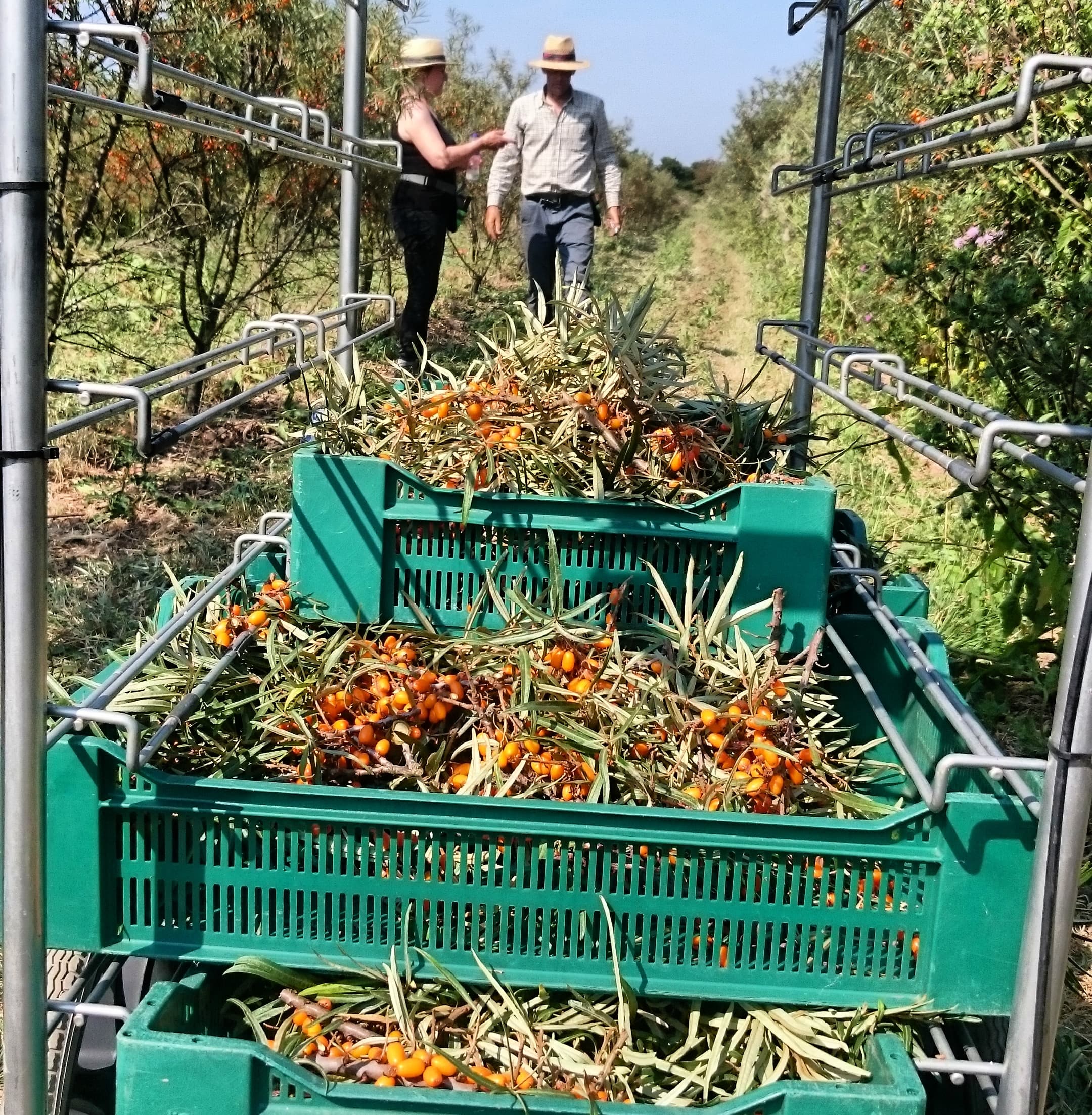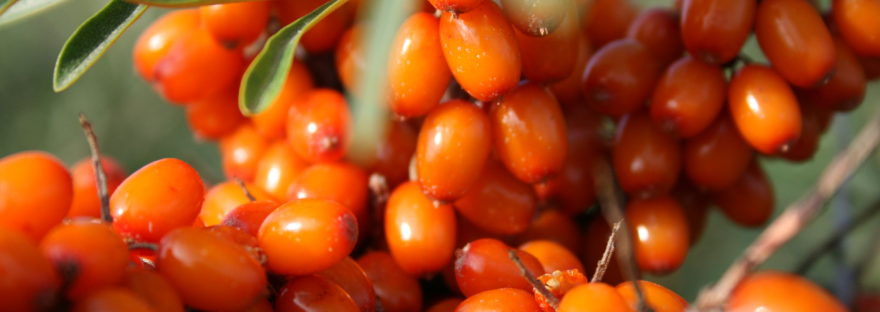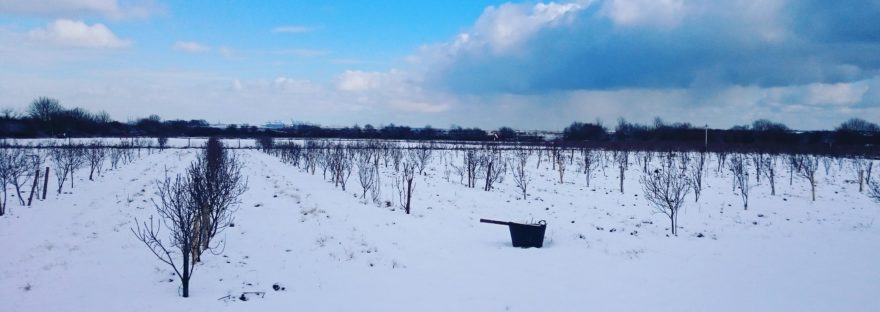David, who is in charge of managing our sea buckthorn field at Devereux Farm gives his update on what has been a difficult year in the field.
The New Year is a time for reflection and positive planning. I have to admit that it feels good to see 2019 behind us. The year started well with the building of our prototype harvesting system; purchase of a sprayer for applying foliar feeds; and the end of three years of transition to becoming fully organic certified. It was marred however by strong winds in March 2018 which created poor pollination resulting in a small, patchy crop of Siberian berries. This is the second year this has happened and it is a direct consequence of moving a plant from the cold climate of Siberia to our mild coastal weather. In effect it is an example of climate change but critically it is one that we can influence and the fact that we have seen good harvests from these plants in previous years shows that it was just one of those years.
Our harvesting method is now cutting branches, then freezing them in a cold store to -25 deg C. The branches are then put through our prototype berry separator. This removes the berries from the branches but some varieties, such as the Siberian Klaudia and Latvian plants carry a lot of leaf resulting in not all leaf being removed from the berries. So one project for 2020 is to modify the separator to refine the clearing process.
Choosing to harvest by branch cutting means that we need to prune our plants so they will be cut on a three or four year cycle. If plants are only going to be harvested once in three or four years it means we need to triple the size of our orchard. It was for that reason that we imported 4000 new plants from Siberia this autumn. This might sound simple but importing plants is a highly controlled process. Procedures are in place to prevent importing dangerous plant diseases into the country. It took 18 months to ensure the plants came from a certified disease free source – but better safe than sorry.
2019 has been a year of odd weather. By the end of September there had been no rain and the ground was baked hard. Since then it has not stopped and the soil is sodden. The unpredictability of weather was almost as trying as the activities of our politicians throughout the year. Brexit became a painful distraction through 2019 and at last it feels that we can now move on.
So for 2020 – again the Siberian variety Klaudia started to open its buds this week. By mid-February all varieties will be showing enough leaf to have their first spray feed. The ladurner cultivator will start to control the weeds under the plants as soon as the soil is dry enough. We will be extending our audio system to keep the jackdaws away, and trialling wind breaks to improve pollination. The focus for so long has been on growing sea buckthorn, but this year we will start product trials, juicing berries from which to offer British grown, organic sea buckthorn products, which we hope will be good news to those of you looking for a British product!
Wishing you a happy and healthy New Year.



